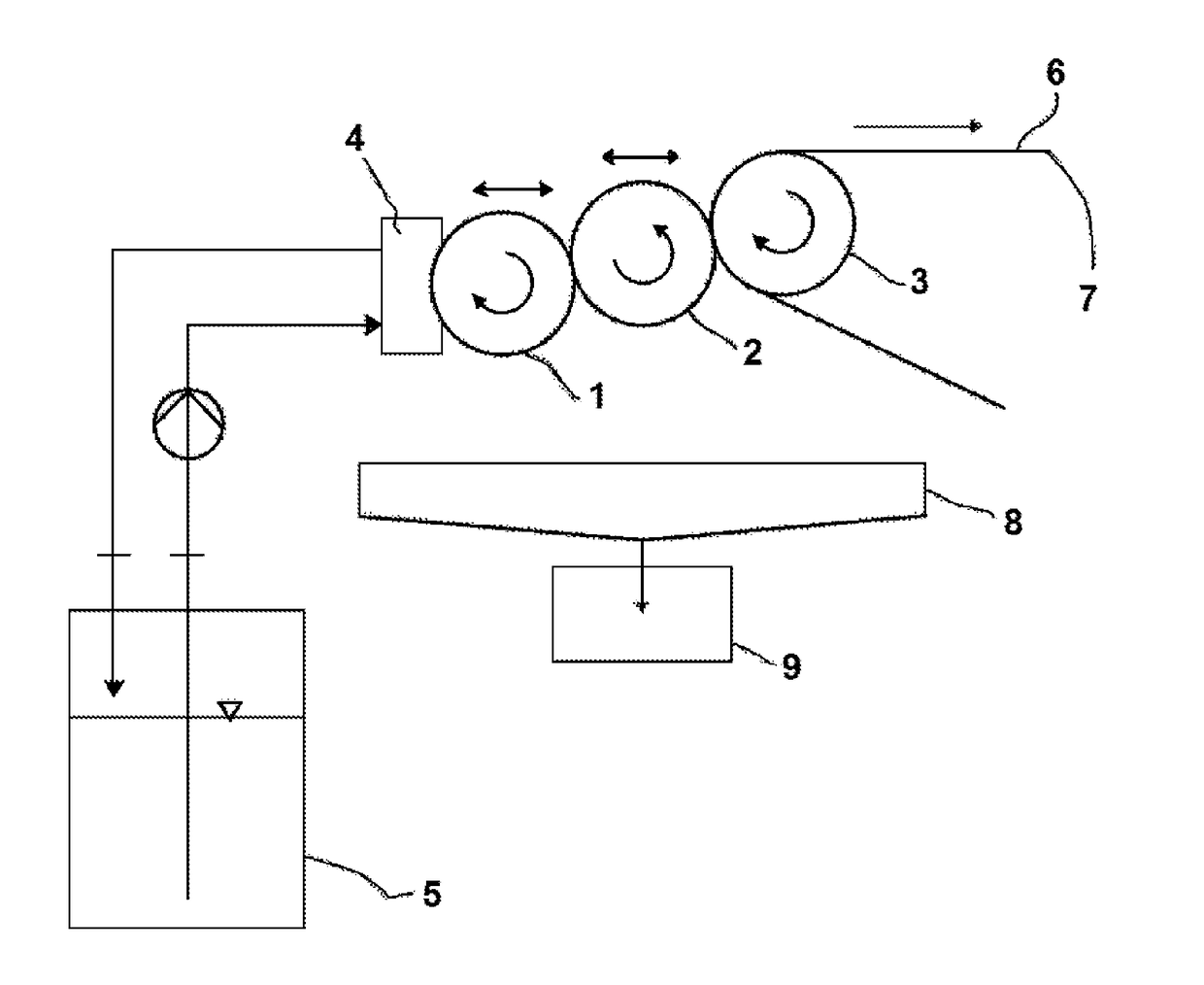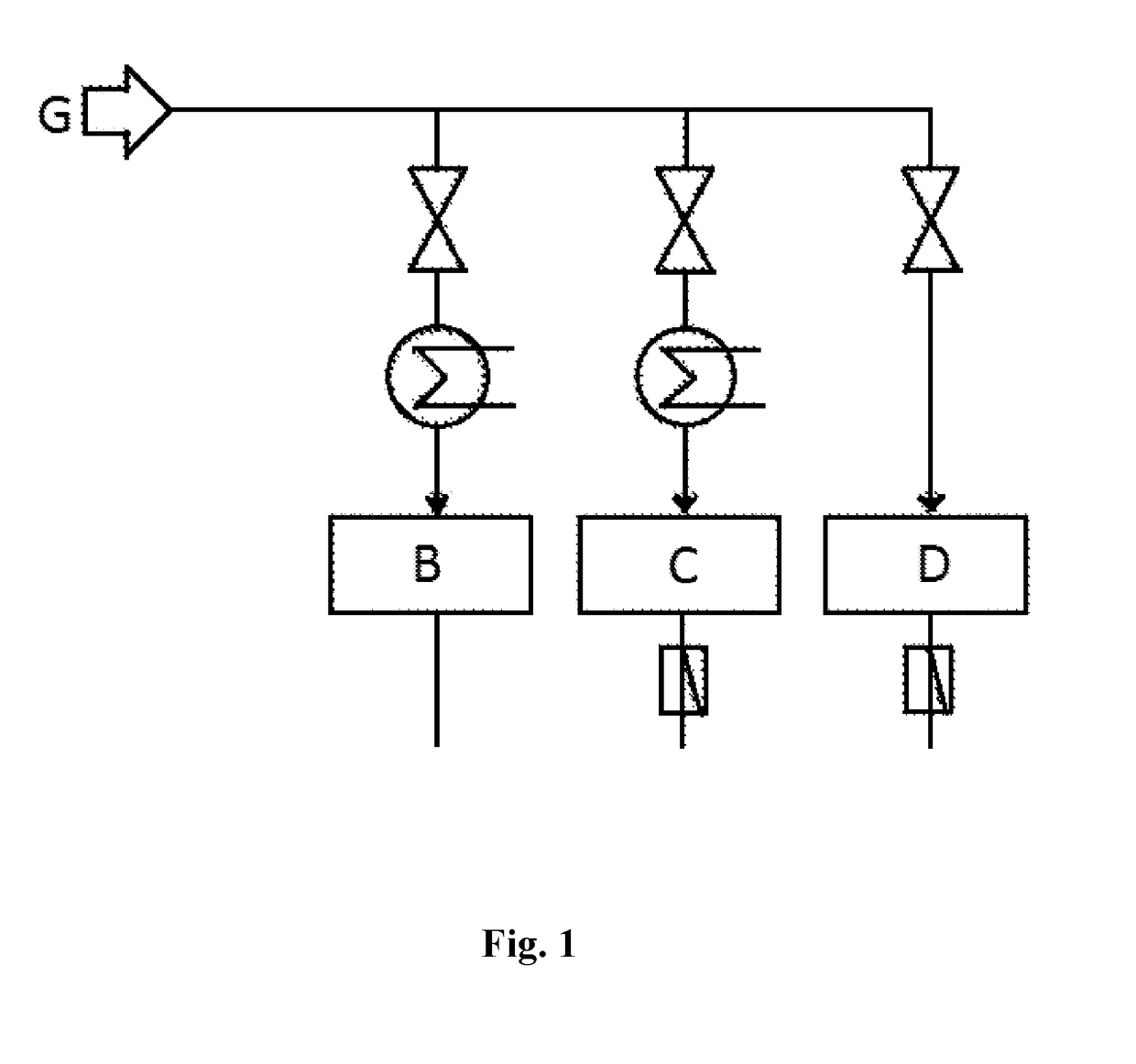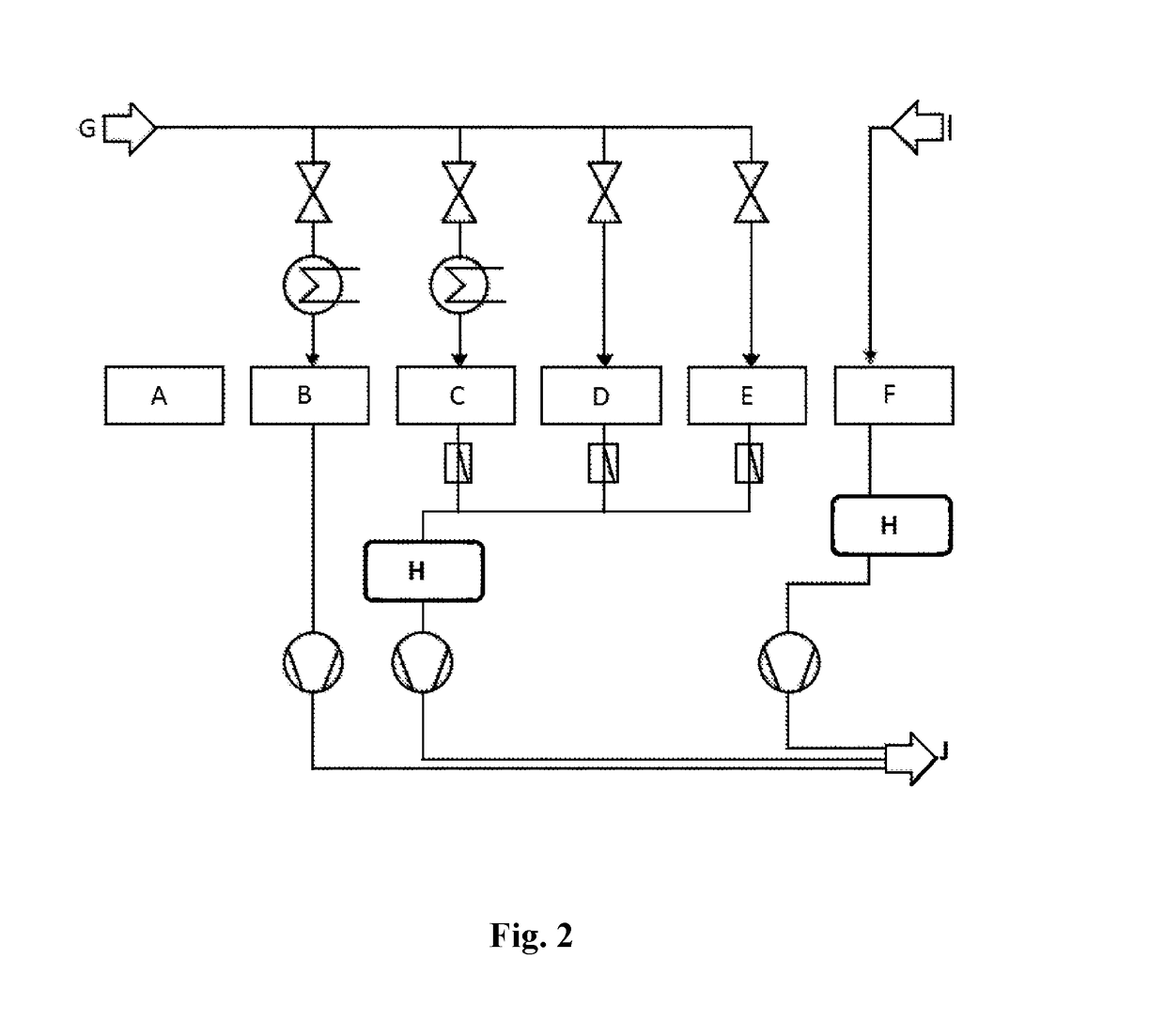Method for the Continuous Coating of a Cellulose-Based Fibrous Substrate Web with Fatty Acid Chloride
a technology of cellulose-based fibrous substrate and fatty acid chloride, which is applied in the direction of pulp material addition, water-repellent agent addition, flexible cover, etc., can solve the problems of affecting the normal paper recycling process, and affecting the quality of paper
- Summary
- Abstract
- Description
- Claims
- Application Information
AI Technical Summary
Benefits of technology
Problems solved by technology
Method used
Image
Examples
example 1
[0081]The treatment of the base paper was carried out analogously to experimental set-up 1, with the difference that the base paper was pre-dried with contact drying at 110° C. and about 5% rH to a moisture content of 1.7% (in accordance with EN ISO 638:2008). The paper treated in this manner had a Cobb60 value of 19 g / m2 on the coated front side and a Cobb60 value of 72 g / m2 on the back.
example 3
[0084]The treatment of the base paper with the fatty acid chloride was carried out analogously to experimental set-up 1, with the difference that the paper was pre-dried in an air circulation drying oven for 1 min at 105° C. The paper treated in this manner had a Cobb60 value of 18 g / m2 on the coated front side and a Cobb60 value of 18 g / m2 on the back.
example 4
[0085]The base paper was coated in a single layer of 5 g / m2 with a 20% aqueous solution of polyvinyl alcohol (Mowiol 4-98, degree of hydrolysis >98%) on a coating table from the company Erichsen GmbH with doctor blade No. 2 and a coating speed of level 5 at 25° C. The paper obtained thereby was dried for 24 h at 105° C. The treatment of the coated base paper with the fatty acid chloride was carried out on the side coated with polyvinyl alcohol analogously to example 3. The paper treated in this manner had a Cobb60 value of 4 g / m2 on the coated front side and a Cobb60 value of 58 g / m2 on the back.
[0086]Obviously, coating the paper with polyvinyl alcohol leads to a surface reaction of the fatty acid chloride with the hydroxyl groups of the polyvinyl alcohol and thus to a lower penetration of the fatty acid chloride into the paper. This leads to a poorer Cobb60 value on the untreated back.
[0087]In summary, examples 1-4 prove that pre-drying the paper web significantly improves the resu...
PUM
| Property | Measurement | Unit |
|---|---|---|
| viscosities | aaaaa | aaaaa |
| viscosities | aaaaa | aaaaa |
| humidity | aaaaa | aaaaa |
Abstract
Description
Claims
Application Information
 Login to View More
Login to View More - R&D
- Intellectual Property
- Life Sciences
- Materials
- Tech Scout
- Unparalleled Data Quality
- Higher Quality Content
- 60% Fewer Hallucinations
Browse by: Latest US Patents, China's latest patents, Technical Efficacy Thesaurus, Application Domain, Technology Topic, Popular Technical Reports.
© 2025 PatSnap. All rights reserved.Legal|Privacy policy|Modern Slavery Act Transparency Statement|Sitemap|About US| Contact US: help@patsnap.com



